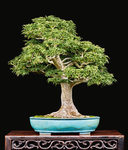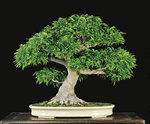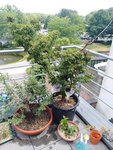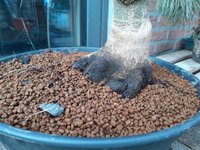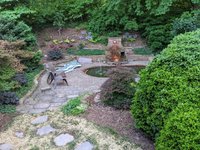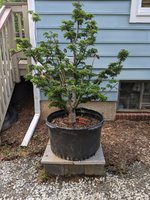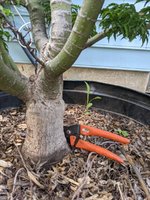I was thinking... Would it be best if I take smaller layers on each branch over the course of a couple of years? Or layer the thick branches closer to the base of the tree, so that I have 5 large trees?
to answer your question, shishigashira (and koto hime) produce mostly straight—and as others have mentioned, brittle—branches like yours has done. if you do air layer thicker branches, i would use these two attached photos as inspiration. They are trunks with little movement, and elegant branch work. It is not worth ‘wasting’ a thick branch by air layering something that you can’t already reasonably visualize as an excellent bonsai.
I know 2 people who—when it comes to cultivars like shishigashira or koto hime—wire young shoots in their tall and vigorous parent plants, and then air layer them off. your shishigashira will produce shoots over 15cm long next spring. You can wire a few when they are young, and let them remain on the parent plant until they have gained a satisfying thickness, then air layer. You can also prune them, select buds, and continue to let them grow before air layering. (doing this delays your progress on the nebari)
i am not attracted to that idea myself, but thought i would share what i was taught. i have a perference for multi-trunk specimens when it comes to cultivars like this one. for that reason, when i chose to purchase and air layer a shishigashira, i was deliberately looking for “clumps”:
Realize, @derek7745 that this tree would fetch between $700-$1000 at any bonsai nursery in my area. The level of "development" is key here. They don't ramify/develop branching all that rapidly. But that's not what you would be paying for. It's really about the bark character/ trunk character...

www.bonsainut.com
this could be another option for air layering
it could also be fun to air layer many smaller branches and create a forest. Bill Valavanis has a number of koto hime forests in his garden that are spectacular, including one that he recently brought to the shohin show
this could be another option for air layering
a tree the size of yours is likely to yield all of these types of candidates: young shoots to wire, thin branches to layer, thick branches to layer, clumps to layer, etc. Do a few of each?

edit: don’t forget to start a few cascades too! never seen a shishi cascade before (probably because of their upward habit and brittle branches), but with a parent plant like yours, i’d give it a try why not?


